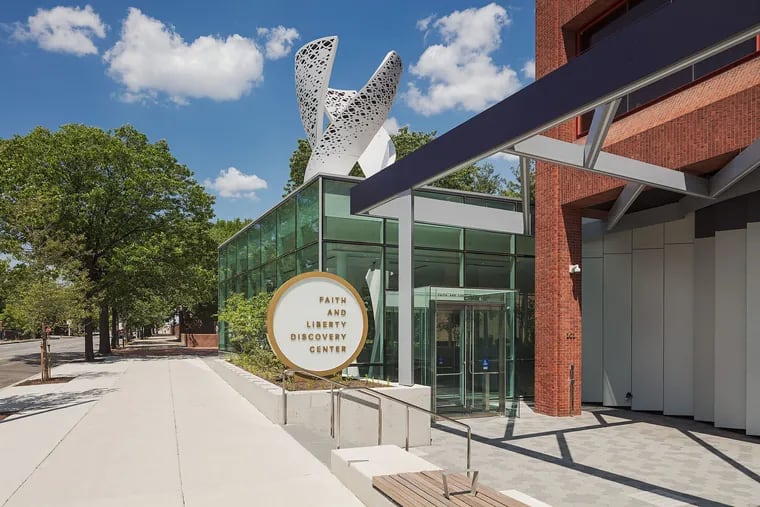The Faith and Liberty Discovery Center announces its closure less than three years after opening at Independence Mall in Philadelphia.
The museum created by the American Bible Society in July 2021, it would be open to visitors until March 28. The Christian ministry nonprofit that translates Bibles and sends them around the world has recently been besieged by challenges, including layoffs, financing problemsand five CEO changes in two years.
Their latest general manager, Jennifer Holloran, appointed in February, informed employees of the closure in an email sent Wednesday, according to Christianity today.
“Despite the valiant efforts of the FLDC leadership and team, we have not been able to achieve the long-term sustainability that an experiment like this needs to succeed,” Holloran wrote, according to Christianity Today. She paraphrased Ecclesiastes 3: “Everything that happens in this world happens in God’s timing. »
The decision to close the $60 million center was accepted by the museum’s management and its founders. In a statement to The Inquirer on Saturday, the Faith and Liberty Discovery Center cited the pandemic and “structural limitations” as some of the reasons for the closure. A spokesperson for the American Bible Society would not provide further details about the closing beyond this statement.
As of June 2022, the museum’s total revenue after expenses fell from $29.6 million to just under $4 million, according to tax documents published by ProPublica.
Why did the Faith and Liberty Discovery Center open in Philadelphia?
The American Bible Society was a New York-based organization for nearly 200 years until it sold its $300 million complex to move to Philadelphia in 2015.
At the time, former CEO Roy Peterson cited the cost of living as a reason for moving.
“People can afford to live here (in Philadelphia); it’s walkable, there’s public transportation,” Peterson told The Inquirer.
The group leased nearly 100,000 square feet on two floors at Fifth and Market Streets for 25 years and began planning to open a center on the ground floor. The rent is approximately $1.3 million per yearaccording to Christianity Today.
The planned debut date was 2016, and at the time Peterson referred to it as a center, not a museum.
The Faith and Freedom Discovery Center did not materialize for five years, in a context 40,000 square feet space that Inquirer columnist Inga Saffron described as “a challenge.” At that time, the center described itself as “Philadelphia’s most immersive museum” with the goal of showing how religious faith shaped freedom in the United States.
“We created a huge digital platform, disguised as a museum,” said Pat Murdock, former executive director of the center. “It looks like a museum – we have artifacts and all that, but it’s actually a digital platform tailored to the way people learn today.” They want to learn from the media. They want to learn from a story. And they also want to collect things and create. This is why we created the creator space.
Since the museum operated in what was once an office, architect David Searles of JacobsWyper Architects And Local projectsthe exhibition designer behind the National September 11 Memorial and Museum, was hired to make it more welcoming. Benches were included to encourage passersby to relax, and a swirling white sculpture dubbed The Beacon designed by Local Projects drew more attention to the center.
What was in the museum?
Among the exhibits, the nonprofit organization featured a collection of historic Bibles, including one by William Penn, as well as video interviews with ordinary people telling personal stories of faith.
Although the center recognizes problems with religion in American society, it has drawn criticism.
At the time of its opening, Jonathan Zimmermanprofessor of educational history at the University of Pennsylvania, told The Inquirer: “The story they tell is essentially a fairy tale. »
This feeling continues to resonate social networks Since the announcement of the closure, some have wondered whether such a museum will have a role in 2024, and others would like it to be better announced.
What would happen to the exhibitions now?
The impact has yet to be fully measured, with tourism officials and nearby museums, such as the Weitzman National Museum of American Jewish History, unaware of the closure until The Inquirer contact.
The Faith and Liberty Discovery Center told The Inquirer in a statement that Holloran, CEO of the American Bible Society, said she looks forward to “reimagining what the future of content could look like through an accessible digitized format to the public “.
People who have already purchased tickets beyond the month of March will be refunded.


